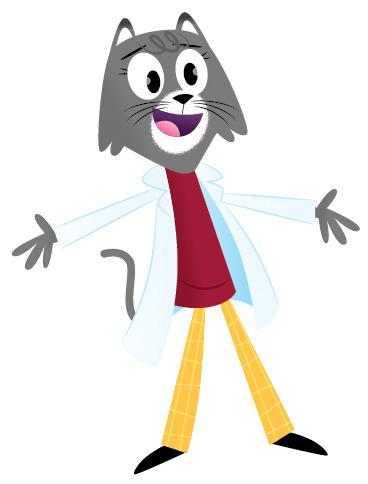What exactly is cheese? -Mark, 11
Cheese is delicious. At least, that’s this cat’s professional opinion. For the more scientific answer, I visited the cheese makers here at Washington State University.
Cheese is the fat and protein from milk, said my friend John Haugen who runs the WSU Creamery where they make Cougar Gold Cheese.
At the creamery, students test milk from the dairy to make sure its fat and protein ratio is just right for cheese. They also heat up the milk to get rid of any bad bacteria—it’s a process called pasteurization. Not all bacteria are bad, though. In fact, some bacteria are really helpful for making foods, including yogurt, pickles, and cheese.
All cheese is made with a kind of lactic acid bacteria. These tiny little organisms are so small you would need to use a microscope to see them. They eat the sugar in the milk and make acid. The acid gives the cheese its tangy flavor.
There are even certain kinds of bacteria that are in charge of making the holes in Swiss cheese.
As Haugen explained how they add bacteria into the milk, I wondered how the liquid mix becomes a solid.
Haugen said that we need an enzyme, a protein that has a very special job to do. In cheese, enzymes work on protein in milk to break the bonds that keep it together. The protein opens up and sticks to other proteins around it to create a solid. If the enzyme does its job, the liquid will thicken, or coagulate.
“It’s almost looks like thick yogurt,” he said.
After that, the cheese makers will cut up the coagulated milk. When it starts looking a bit like cottage cheese, a machine pumps the mix onto a metal table.
This mix is partly made up of whey, which is mostly water. The other part of the mix is the soft, fresh curds. You can eat the cheese curds. They are tasty. Trust me. But they aren’t quite officially cheese yet.
First, the student cheese makers will pack the curds together into big loaves. They will flip the loaves over several times in a process called “cheddaring.”
If you wanted your cheese to be stringier, softer, crumblier, or harder, you might treat it a little differently. But at the creamery, Cougar Gold gets cheddared, chopped up, and salted to kill off some of the remaining bacteria and to keep it from liquefying.
The cheddaring process is actually named after the place where cheddar was first invented—Cheddar Gorge in England.
During the 12th century, people kept their cheese in caves. The temperature and humidity was just right for storing cheese.
At the WSU Creamery, cheese is also stored at just the right temperature, but inside tin cans.
“It’s almost like its own little cheese cave,” said Haugen. The cheese will stay in the can one full year before we eat it. Aging the cheese helps bring out the flavors.
After my visit to the creamery, I learned cheese is not just delicious. It’s milk, bacteria, enzymes, and salt. It’s science.
Sincerely,
Dr. Universe


